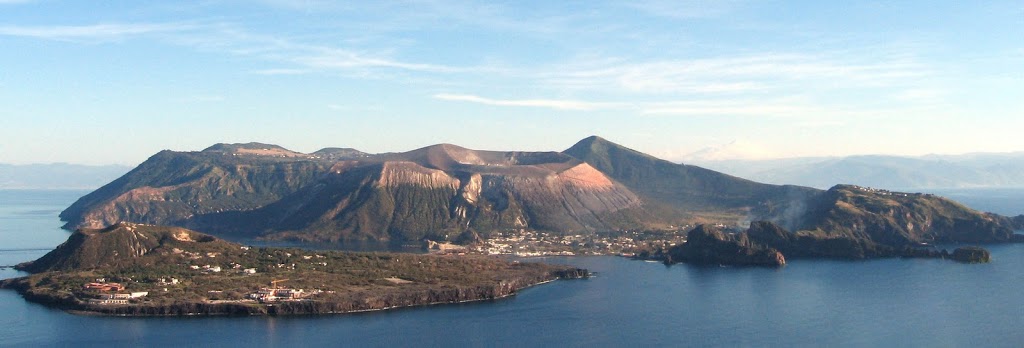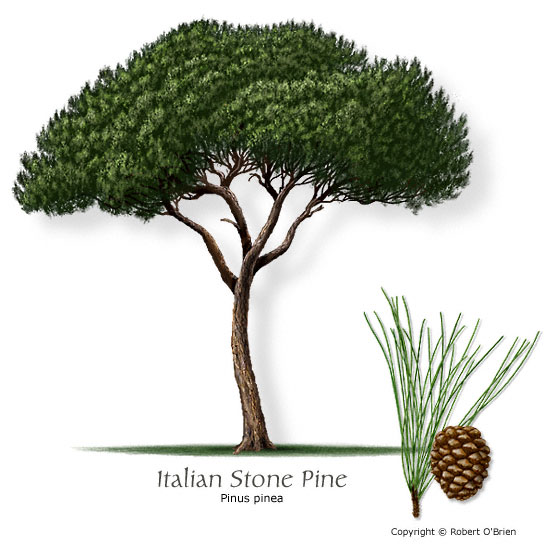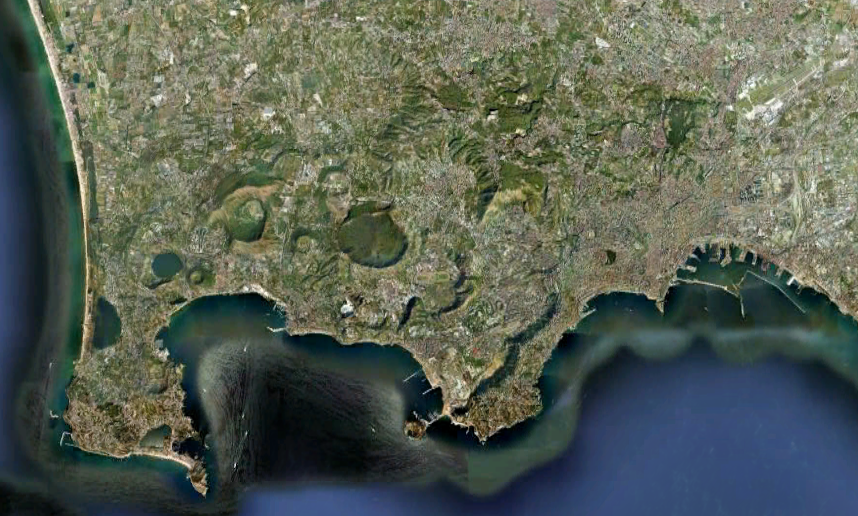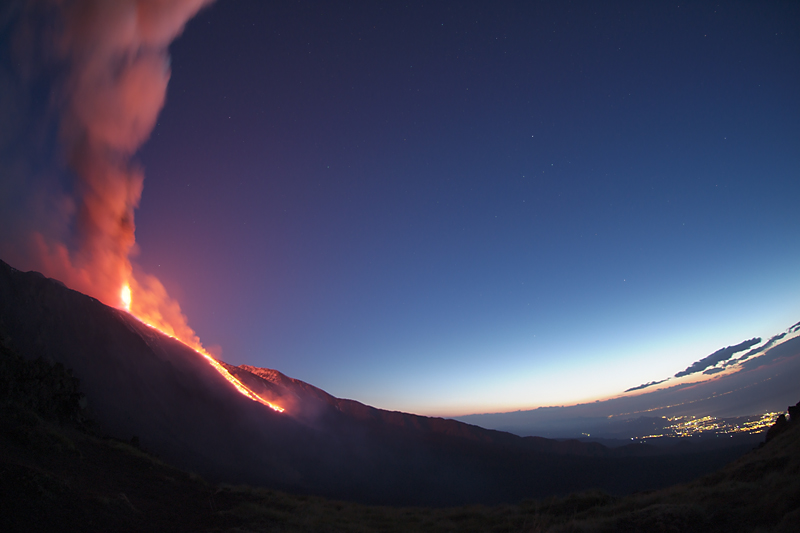 |
| Mount Etna (from SwissEduc.ch) |
Mount Etna lies right above the cities of Taormina and Catania on the island of Sicily. Every year lava flows from it’s summit into once inhabited regions along the lower slopes of the volcano. While at Etna in 2006, although I did not see any eruptions I did have the opportunity to walk across lava flows that were less than a week old. The flows were still so hot I could feel the heat still coming off of them.
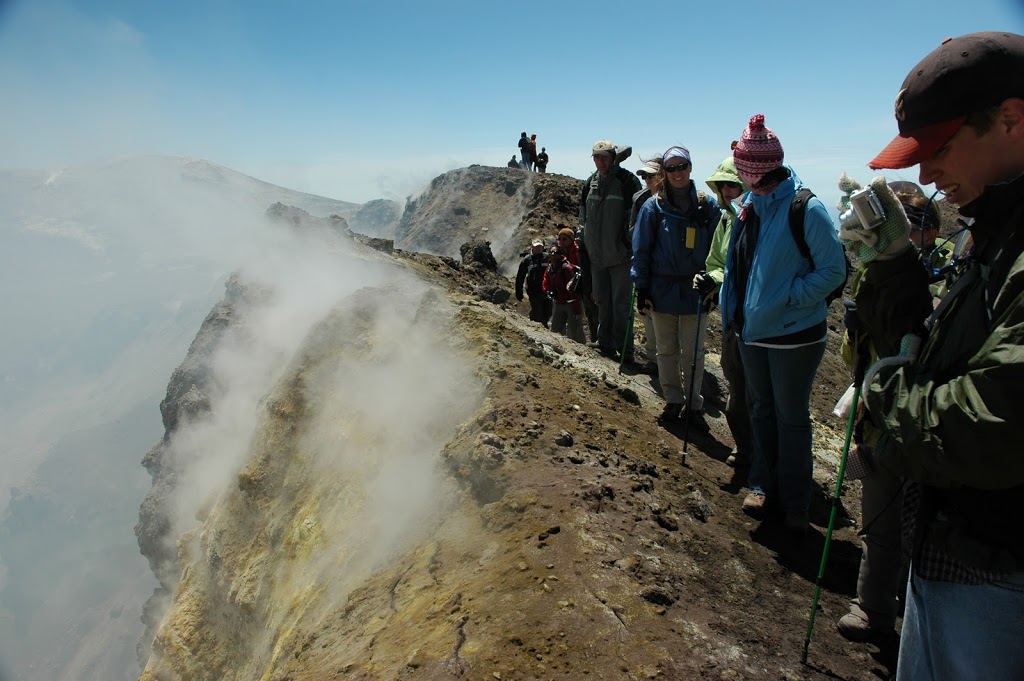 |
| Crater rim of Etna |
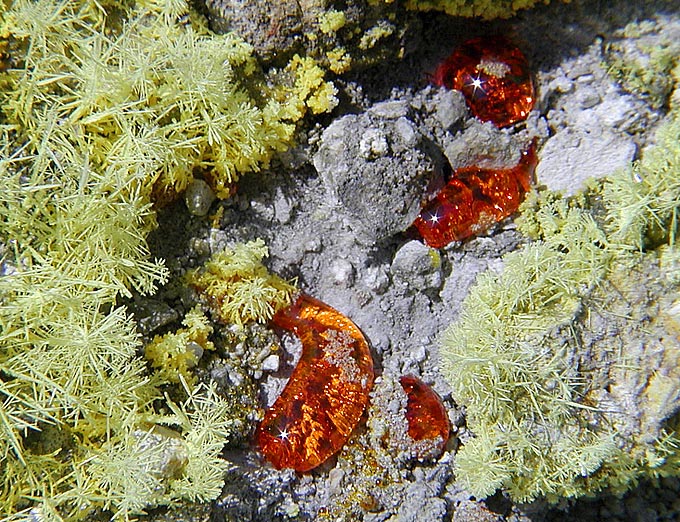 |
| Liquid sulfur (from SwissEduc.ch) |
North of Vulcano is the small island of Stromboli. Stromboli is another volcano that has been continuously active for nearly 40,000 years.
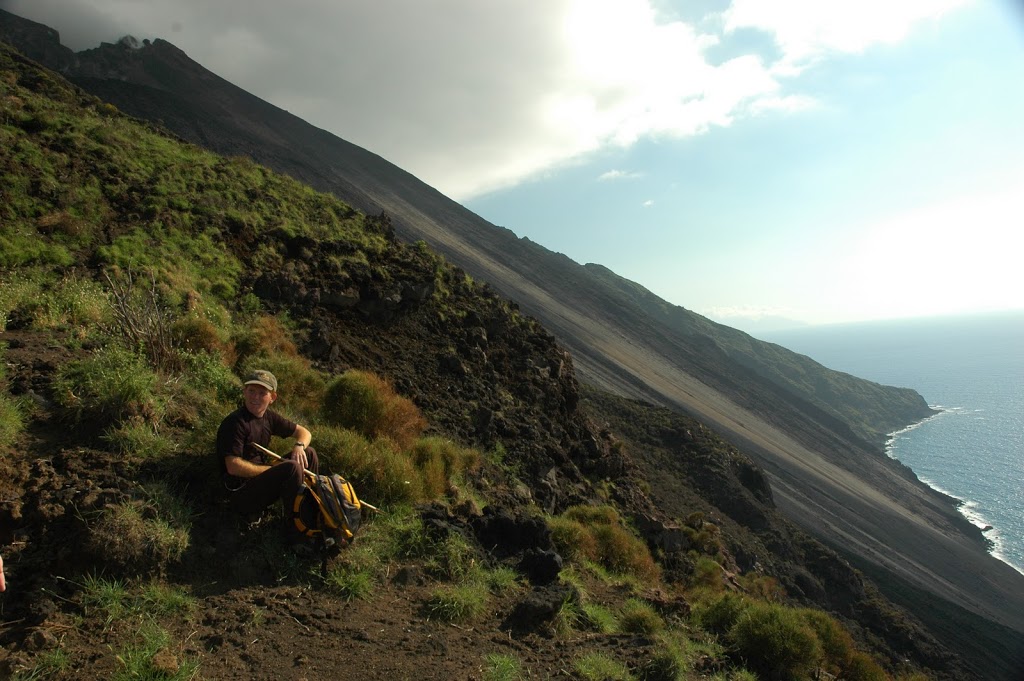 |
| Alvin Anderson and Stromboli |
From Stromboli, I made it to the only active volcano on the European continent: Mount Vesuvius. This volcano is most famous for its AD 79 eruption that decimated the towns of Pompeii and Herculaneum.
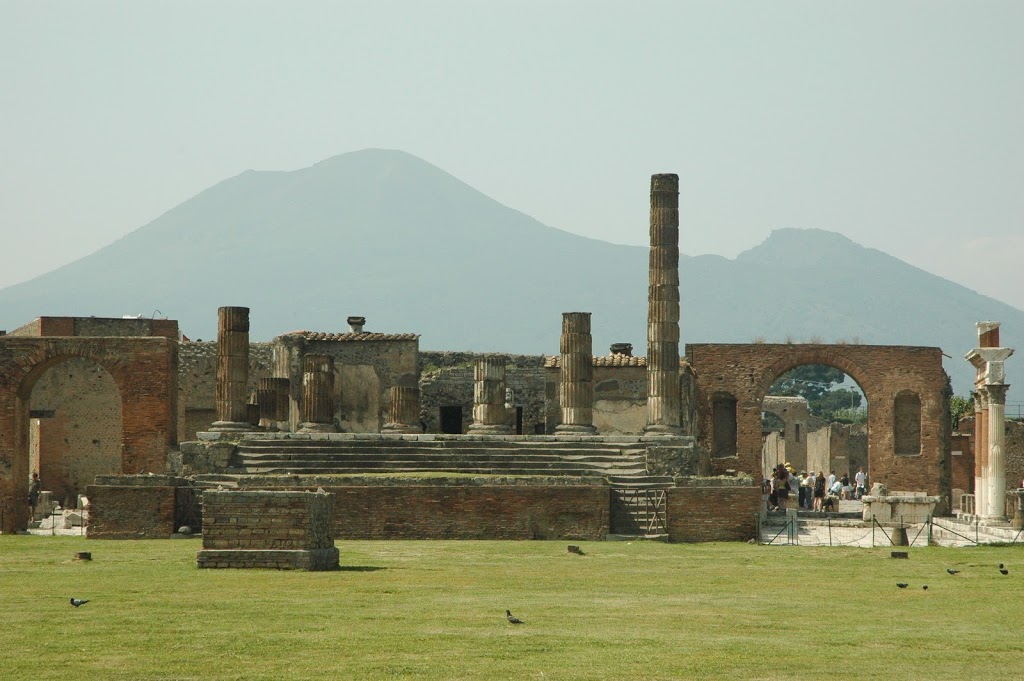 |
| Pompeii and Vesuvius |
Of the AD 79 eruption, only two written accounts have survived; Pliny the Elder and Pliny the Younger. Describing this eruption, Pliny the Younger wrote:
“I cannot give you a more exact description of its appearance than by comparing to a pine tree; for it shot up to a great height in the form of a tall trunk, which spread out at the top as though into branches. … Occasionally it was brighter, occasionally darker and spotted, as it was either more or less filled with earth and cinders.”
What Pliny is describing here is the eruptive sustained column of what is now called a “Plinian” eruption. As the pumaceous material is rocketed skyward it reaches the troposphere and spreads laterally creating an umbrella cloud (what Pliny described as a flat-topped pine tree).
This volcanic column continued for several hours as the umbrella cloud continued to spread further from the eruptive center. As the pumice in the umbrella cloud cools, it rains down like snow. The area around Vesuvius was covered with 15 to 20 feet of pumice. Once the pumice rain stopped, the residents of Pompeii and Herculaneum tried to escape; however traveling over meters of pumice would be like walking through a room filled with plastic balls.
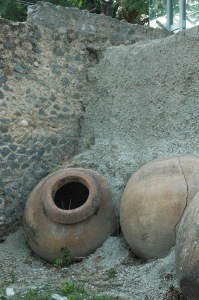 |
| Roman pots (one meter diameter) in Pompeii underneath meters of Vesuvian pumice |
Little did they know that the pumice stopped because the volcano could no longer sustain its eruptive column. As the column collapsed, a cloud of superheated gas rushed at nearly 450 miles per hour towards the cities. When the pyroclastic flow hit the people, it came with such force people died before realizing what had happened. Fortunately, it is surmised the deaths caused by the pyroclastic cloud were painless. As the eruption ceased, Pompeii and Herculaneum were completely buried and became lost for nearly 1700 years. After Pompeii was accidentally discovered and excavation began, the excavators discovered voids in the ash fall. By chance one of these voids was filled with plaster. After the excavation was finished around the mold, it was revealed to be a cast of a person. Over 1000 casts have been made of the people killed from Vesuvius.
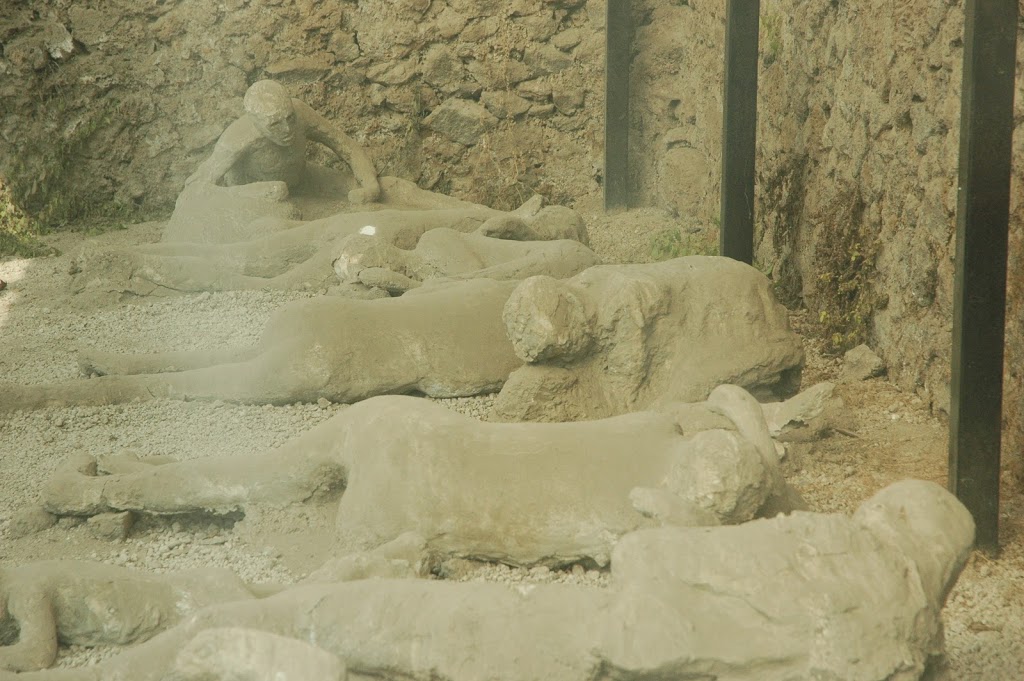 |
| Casts of bodies caught in the pyroclastic cloud. |
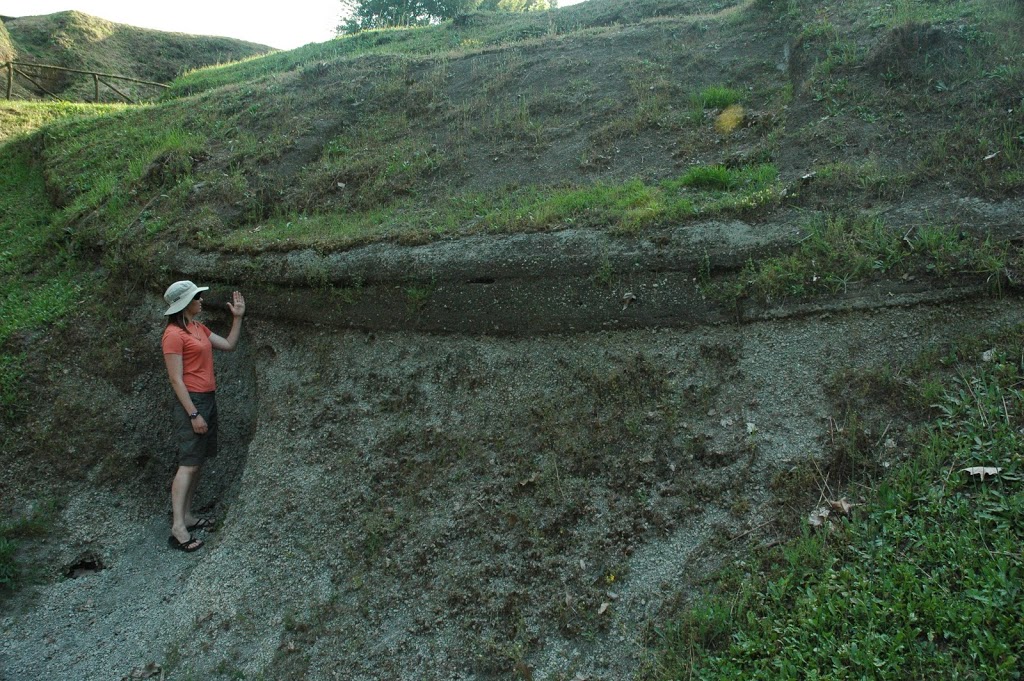 |
| Trough of pumice with Nicole Cox for scale. |
This type of eruption is not new to the Italian peninsula. Over 400 thousand years of volcanic activity have been recorded by Vesuvius and nearby volcanic fields. The Phlegraean fields (fields of fire) have also produced massive amounts of ash fall. If you ask me, the area around Naples is not a very safe place to live.
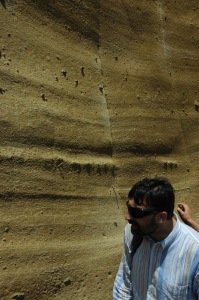 |
| Claudio Scarpati describing the 15 thousand year old Neapolitan Yellow Tuff in Naples. |
|
The calderas and craters of the Phlegraean fields on the outskirts of Naples.
|
Next week: the High Himalaya
![]() This work is licensed under a Creative Commons Attribution-NonCommercial-ShareAlike 4.0 International License.
This work is licensed under a Creative Commons Attribution-NonCommercial-ShareAlike 4.0 International License.

